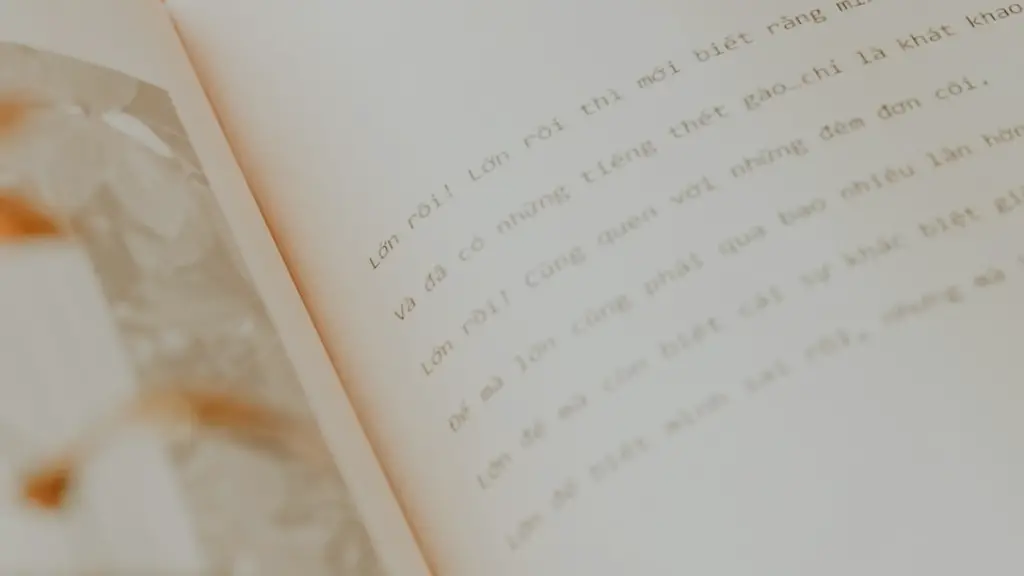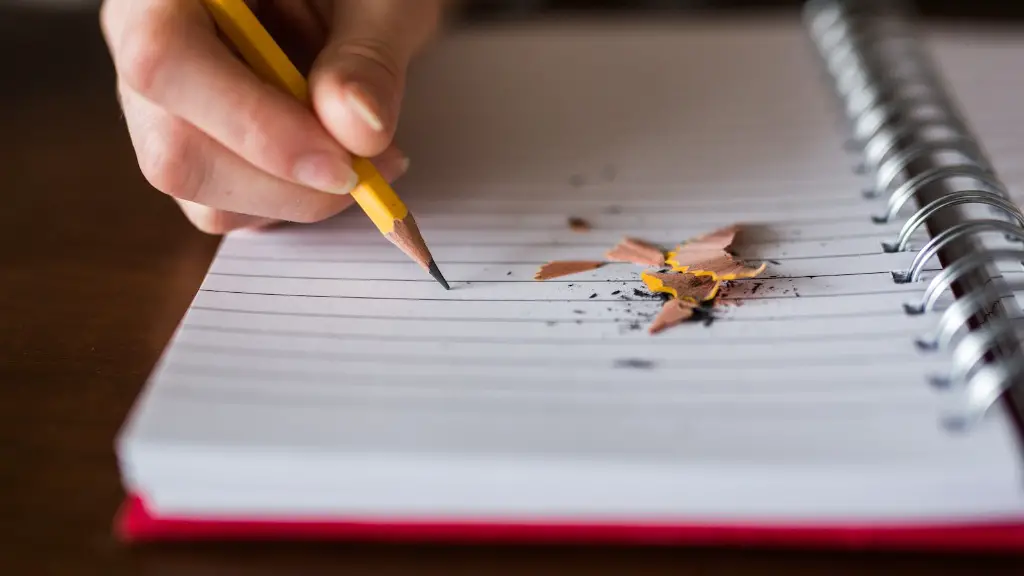A Brief Overview of Imagery Poetry
Imagery poetry is a type of poetry which uses language and its vivid imagery to stimulate readers’ senses and to provoke thought. It is a powerful writing style that is used to convey emotion and evoke strong images in readers’ minds. By incorporating imagery into its content, imagery poetry is capable of creating powerful impressions and lasting effects on readers.
Imagery poetry is a highly effective way of conveying emotion and creating powerful images. This type of poetry often uses metaphor and symbolism to create an intense atmosphere and to evoke a strong emotional response in readers. The imagery in these poems can be vivid, imaginative, or abstract. These poems can be used to further explore and express emotions, feelings, and moments in life.
Imagery poetry can be used for different purposes. It can be used to explore the complexity of human emotions and experiences, to tell stories, or to convey a message. For example, a poem may use metaphors, symbols and imagery to explore a moment of sadness or despair, a moment of happiness or joy, or to express a point of view. By using imagery in the poem, the writer is able to capture a moment of life and encapsulate it in a single line.
In order to create a successful imagery poem, a writer needs to be aware of the effects that language can have on readers. Writers use words to evoke certain emotions and to create a certain atmosphere. In imagery poetry, the language used must not only be vivid and expressive, it must also convey a strong emotion. Therefore, imagery poetry is an excellent tool for conveying emotion and communicating ideas.
Imagery poetry is a powerful way to capture and communicate moments of life. It can evoke strong emotions, express complex ideas, and tell stories with vivid images. By using language and imagery, imagery poetry can be a powerful and effective tool for making a lasting impact.
The Style and Format of Imagery Poetry
When writing imagery poetry, the format of the poem is very important. There are many different formats, such as free-verse, rhyming poems, and haiku. In free-verse, the poem does not have to follow any particular format, as long as the ideas and emotions are conveyed effectively. Rhyming poems have a specific rhyme scheme, while haiku are a Japanese form of poetry composed of three lines with a specific syllable count.
No matter the format, imagery poetry should always have strong imagery and language that can evoke strong emotions and images. The language should be vivid and expressive, and the imagery should be detailed and precise. Natural imagery, such as describing a sunset, can also be used to create vivid images.
In addition to strong language and imagery, imagery poetry should also have a strong structure. The structure of a poem should enhance the meaning and ideas of the poem, as well as the overall meaning and ideas of the poem as a whole. It is important for the structure of a poem to be clear, logical, and organized.
Lastly, imagery poetry should not be over complicated. Language should be direct and clear, in a way that is easy to understand and comprehend. This will help to ensure the overall message of the poem is conveyed effectively.
Characteristics of Imagery Poetry
Imagery poetry has distinct characteristics which make it unique. A successful imagery poem should have expressive language, vivid imagery, and an effective structure. It should also be direct and clear, and should not overcomplicate its ideas.
The language used in imagery poetry should be beautiful, creative, and expressive. This allows the writer to create vivid images and communicate ideas in a clear and concise way. Metaphor and symbols can also be used to effectively convey complex ideas.
The imagery used in imagery poetry should also be vivid and precise. It should be able to evoke strong emotions and provide readers with a vivid image of the subject. Natural imagery can also be used to create an intense atmosphere and to provide readers with a more realistic image.
In addition to language and imagery, imagery poetry should also have an effective structure. It should flow naturally and have a clear, logical path from beginning to end. This will help to ensure the message of the poem is conveyed in a way that is easy to understand and follow.
Expert Perspectives on Imagery Poetry
Imagery poetry is a powerful tool for expressing emotion and conveying ideas. According to PoetsOnline, experts believe that imagery poetry should use metaphor and symbolism to evoke emotion and create an intense atmosphere. Similarly, Grammarly states that imagery poetry should be composed of vivid, expressive language and vivid imagery.
The poetic language used in imagery poetry should be imaginative and convey emotion in a way that is easy to understand. WritingCoach suggests that the language should be direct and clear, and the structure of the poem should be clear, logical, and organized. Similarly, BetterWritingTips recommend that imagery poetry should use strong imagery to create vivid images and to evoke strong emotions.
Imagery poetry is an effective tool for expressing emotion, conveying ideas and telling stories. Its use of language, imagery and structure make it a powerful way to communicate a message. Experts believe that imagery poems should use expressive language and vivid imagery, and should have an effective structure.
Analyzing Imagery Poetry
When analyzing imagery poetry, it is important to consider the language, imagery, and structure of the poem. Effective imagery poems have expressive language and vivid imagery, as well as a strong structure. Therefore, when analyzing imagery poetry, it is important to consider these three aspects and how they all work together to create a successful poem.
When looking at the language, it is important to consider the words used, the tone, and the emotions that are being conveyed. The language should be expressive and evoke strong emotions, while being direct and clear. It is also important to consider the imagery. The imagery should be vivid and detailed, and should be able to evoke strong emotions in readers.
Finally, it is important to consider the structure of the poem. The structure should be clear, logical, and organized. It should also convey the message of the poem clearly and effectively.
Examples of Imagery Poetry
There are many examples of successful imagery poetry. One example is the poem “The Lighthouse” by F. Scott Fitzgerald, which uses vivid imagery, metaphor and symbolism to explore a moment of sadness. In the poem, Fitzgerald finds comfort in the lighthouse, which symbolizes hope and allows him to find solace from his despair.
Another example is the poem “The Woodland” by Louise Bogan, which uses natural imagery, such as a forest and a night sky, to evoke intense emotions and to create a vivid, beautiful atmosphere. Louise Bogan also uses vivid and expressive language to create an intense and emotional atmosphere.
Lastly, “A Litany in Time of Plague” by Thomas Nashe is a prime example of a successful imagery poem. The poem’s vivid language and imagery, as well as its effective structure, make it a powerful and successful imagery poem.
The Power of Imagery Poetry
Imagery poems are a powerful way to convey emotion and communicate ideas. They use language, imagery, and structure to create vivid images and evoke strong emotions. By using expressive language and vivid imagery, imagery poems can evoke powerful emotions and create strong images in readers’ minds.
Imagery poetry is also an effective tool for expressing complex ideas in a concise and clear way. Its use of expressive language and vivid imagery makes it capable of conveying the writer’s feelings and thoughts in an effective and powerful way.
Imagery poetry is a powerful and effective way to express emotion and communicate ideas. Its use of language, imagery, and structure make it capable of evoking strong emotions and creating vivid images in readers’ minds.
Conclusion
Imagery poetry is a powerful and effective way to express emotion, communicate ideas, and convey a message. Its use of language, imagery, and structure make it capable of evoking strong emotions, creating vivid images, and conveying complex ideas. By using expressive language and vivid imagery, imagery poetry is a powerful way to make a lasting impact.





